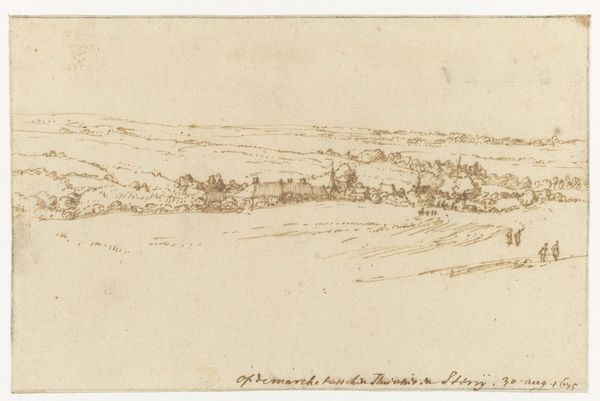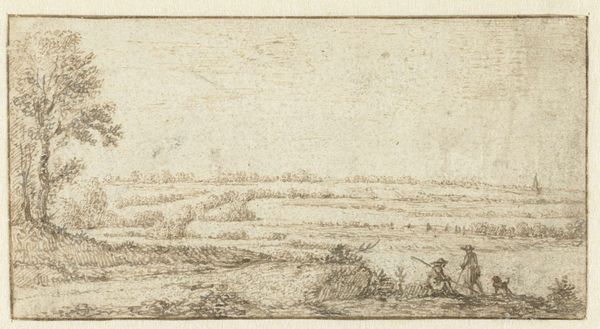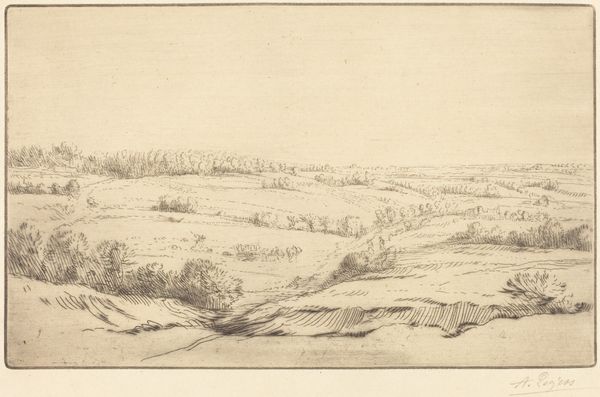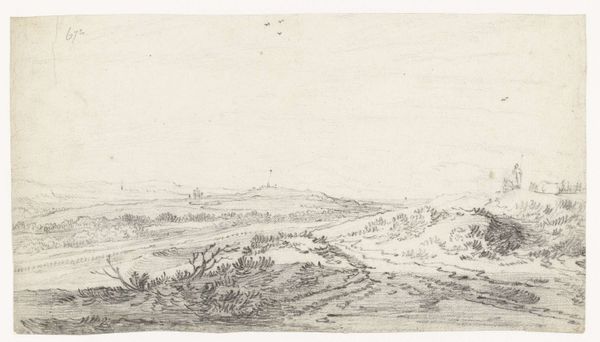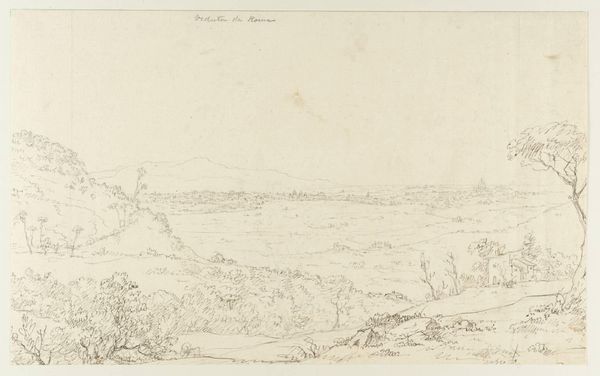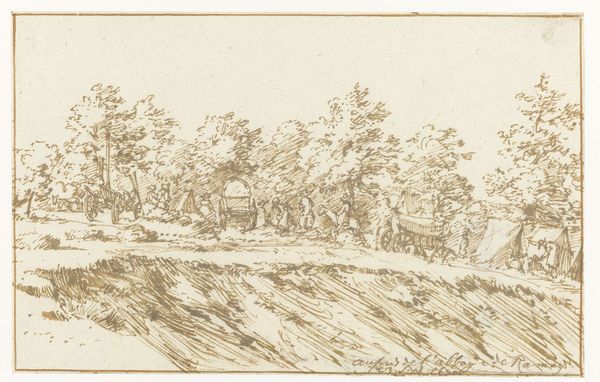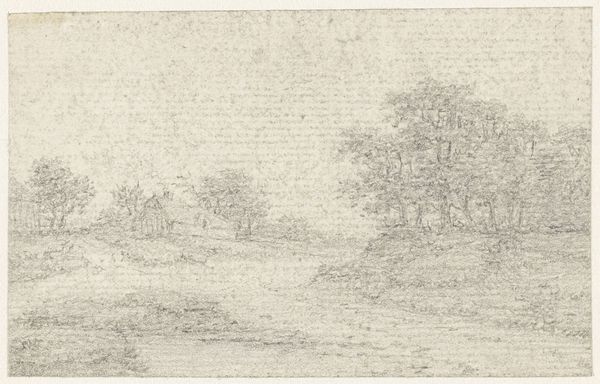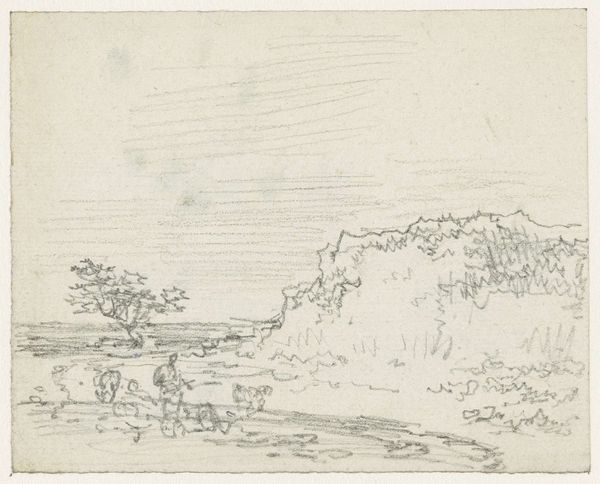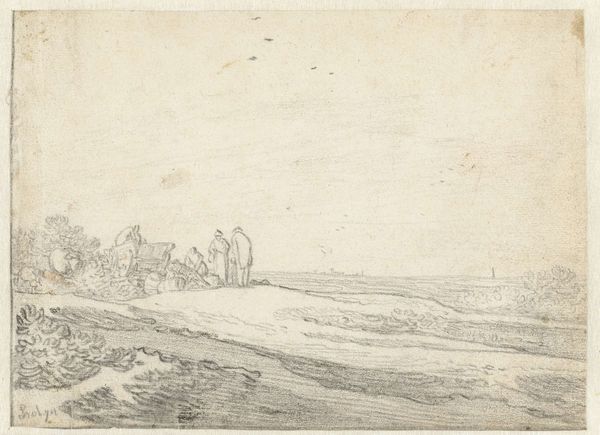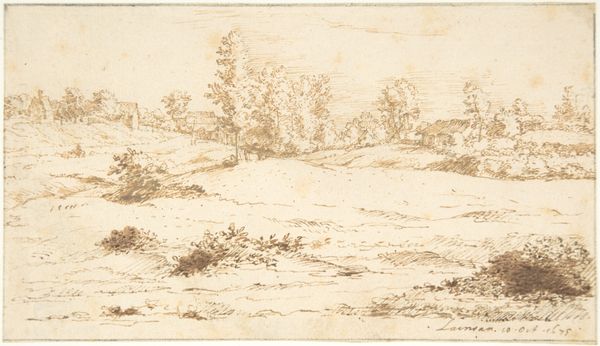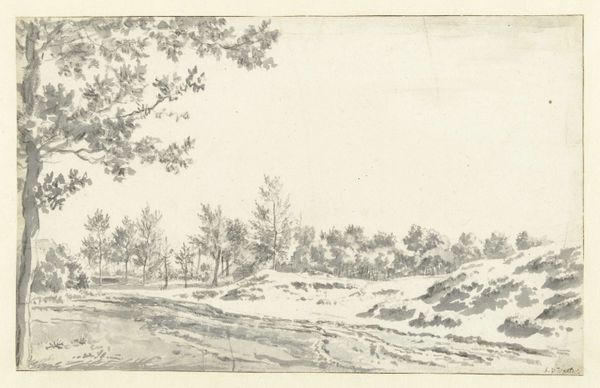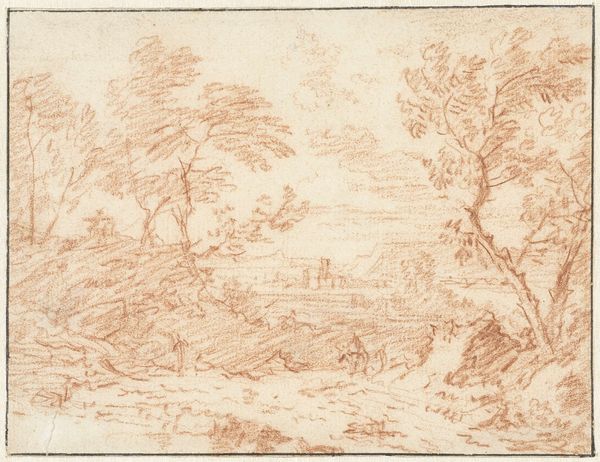
drawing, pencil
#
drawing
#
pencil sketch
#
landscape
#
river
#
etching
#
pencil
Dimensions: height 101 mm, width 170 mm
Copyright: Rijks Museum: Open Domain
Editor: Here we have "Overstroming van de Demer," or "Flooding of the Demer," a pencil drawing possibly created between 1675 and 1677 by Constantijn Huygens II. It depicts a wide landscape with a river and distant trees. It's quite subdued and the linework is incredibly delicate, it’s also relatively small in scale. What catches your eye in this piece? Curator: I find the handling of pictorial space particularly compelling. Huygens employs a masterful control of line and tone to establish depth. Notice how the density and weight of the marks increase incrementally to define foreground from background. What semiotic systems do you detect employed to define depth? Editor: The increasing density, definitely, and maybe also the subtle shift in the direction of the lines creates a tangible ground plane, making you feel the landscape recede? Curator: Precisely! The use of hatching and cross-hatching generates form, light and shadow which function symbolically to suggest texture and depth. It’s through these formal relationships that we arrive at a deeper understanding of Huygens’ skill and the drawing’s impact. What about the use of the blank space; what is your interpretation of it within the piece? Editor: I hadn't considered the blank space. Is it serving to emphasize the flatness of the paper, and contrasting the illusion of depth? It highlights the two-dimensionality of the medium itself. Curator: An astute observation. The artist presents a conceptual tension, reminding us of the artwork's existence as both an illusion and an object, a play of presence and absence. Editor: That tension makes me reconsider how I approach landscape art, recognizing its inherent constructed nature. Curator: Indeed. By studying formal devices, we develop analytical tools, allowing us to appreciate how artwork mediates and translates experience.
Comments
No comments
Be the first to comment and join the conversation on the ultimate creative platform.

